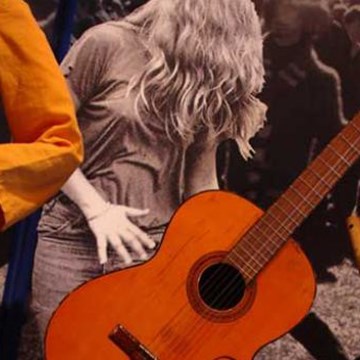Cetinje Monastery
Cetinjski manastir
Cetinje Monastery is the single most important monument of this town at the foot of Mount Lovćen, where the destiny of the Montenegrin people was decided upon and where it was shaped. It was built in 1701 by Bishop-Prince Danilo, the founder of the Petrović Njegoš dynasty, after the destruction of the Crnojević Monastery. The new monastery retained the characteristic architectural elements of the previous temple. Above the entrance to the church there is an inscription of the donor, Ivan Crnojević, transferred from the old temple, and at the apse a table with the coat-of-arms of Crnojević`s family and along the south outer wall a number of decorative consoles. The old stone sculptural elements were given a prominent place in the centre of the loggia on the second floor of the lodgings.
The monastery complex was adapted and extended on several occasions, and was substantially restored in 1927 when the new metropolitan residence was built. In the centre of the complex there is a church dedicated to Virgin Mary’s Nativity. Prince Danilo and Duke Mirko, father to King Nikola, are buried there.
Within the south choir there is a reliquary of the St. Peter of Cetinje, because of which the Cetinje Monastery is often referred to by his name.
At the northern side of the church there is a cell of St. Peter’s. To the south of the church there are two-story lodging quarters with arcade cornices. Adjacently, in the so-called Njegoš’s lodgings, once the metropolitan residence, the monastery treasury is housed. By the richness and particular features of the preserved items, it is one of the most significant and richest in Montenegro. An outstanding collection of manuscripts and old printed books from 13th to 18th century is of particular importance. Some of them were even parchment manuscripts decorated by miniatures. Some of the Crnojević’s incunabula are at display, some post-incunabula from the printing house of Božidar and Vićenco Vuković (first half of the 16th century), as well as numerous copies of illuminated and silver plated Russian editions. Since Cetinje monastery was the residence of Montenegrin rulers, numerous valuable items related to their spiritual rites were also preserved: panhagios, robes, mitres, sceptres, etc. The panhagios (necklaces with the image of Virgin Mary worn by bishop-princes) stand out for their luxurious making. Also, the religious items made of precious metals, such as: chalices, patens (diskos) crosses, then the icons of the domestic, Russian, Greek and Italo-Cretan origin draw attention. The treasury of the Cetinje Monastery holds some collections of votive gifts, reliquaries, stamps, decorations, paintings. Following the 1979 earthquake, the monastery was restored and its treasury given a museum-like design. By its historic mission played over several centuries, the Cetinje Monastery was the centre of spirituality, free-thinking, humane and enlightenment ideas, thus rightfully occupying a prominent place in overall Montenegrin history.
Text source: http://www.see-heritage.org/Museums_of_Montenegro.pdf; http://www.montenegro.travel/me/guide/147142sy,sr,SCH1/objectId,SIG4189me,_area,1120528,_lang,sr,curr,EUR,parentId,RGN76me,season,at2,selectedEntry,sights/intern.html
Foto source: http://commons.wikimedia.org/wiki/File:Cetinje_monastery.jpg
Exhibitions and events
We don't have anything to show you here.
Educational programs
We don't have anything to show you here.
Collections
We don't have anything to show you here.










